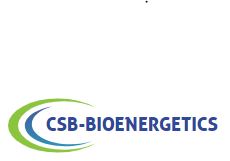Research on the mechanisms underlying the phenomena of health and disease development programming has focused mainly on the process that is specific to the type of cells, organs and the phenotype of interest. However, the observation that exposure to suboptimal or adverse developmental conditions simultaneously affect phenotypes indicate that this exposure might also give effect through cellular mechanisms are common, or shared, whole cells and tissues have different kinds. In this context that we focus on cellular bioenergetics and proposes that mitochondria, bioenergy and signaling organelles, may be a cellular target key underlying development programming.
In this review, we discuss empirical findings in animals and humans indicate that the structural and functional features prime of mitochondrial biology exhibit developmental plasticity, and is influenced by the path the same physiological involved in susceptibility to disorders of age-related complex, general, and that the target this programming mitochondrial development shows stability while the long term. We conclude by articulating the current knowledge gaps and suggests future research directions to bridge that gap.
substrate required for epigenetic modification of histones and DNA. It details a review of how the metabolites produced by glycolysis and the tricarboxylic acid cycle utilized by somatic stem cells to support cell proliferation and commitment descent. Importantly, we also discussed the growing hypothesis that histones can act as a reservoir of energy during times of stress energy. Finally, we discuss how to integrate cell metabolism both extrinsic cues and intrinsic metabolic machinery to regulate cell fate.
Developmental programming of mitochondrial biology: a conceptual framework and review. Triggering influenza and immune responses: Implications for reprogramming metabolism during influenza infection and immunometabolism.
Recent studies support the idea that glycolysis and oxidative phosphorylation rheostats in immune cells that bioenergetics have functional outputs in terms of their biology. Intrinsic and extrinsic factors specific molecular molecule serves as a potentiometer to adjust and control the power output of the glycolytic for breathing.
In many cases, this potentiometers used by influenza virus and immune cells to support the pathogenesis and host immune responses, respectively. Influenza viruses infect the respiratory tract, providing specific environmental niches, while immune cells locate the variable nutrient concentrations as they migrate in response to infection. a subset of immune cells have different metabolic program that adapts to meet the requirements of energetic and biosynthetic support effector functions, differentiation, and longevity in a constantly changing their microenvironments.
ExoPure? Isolation Kit (Urine)
K1240-10
Biovision
each
EUR 836.4
ExoPure? Isolation Kit (Urine)
K1240-2
Biovision
each
EUR 483.6
ExoPure? Mini Chromatography Columns
K1247-10
Biovision
each
EUR 874.8
ExoPure? Mini Chromatography Columns
K1247-20
Biovision
each
EUR 1214.4
ExoPure? Maxi Chromatography Columns
K1248-3
Biovision
each
EUR 1104
ExoPure? Maxi Chromatography Columns
K1248-6
Biovision
each
EUR 1690.8
ExoPure? Isolation Kit (Bio Fluids)
K1241-10
Biovision
each
EUR 836.4
ExoPure? Isolation Kit (Bio Fluids)
K1241-2
Biovision
each
EUR 483.6
ExoPure? Isolation Kit (Cell Media)
K1237-10
Biovision
each
EUR 796.8
ExoPure? Isolation Kit (Cell Media)
K1237-2
Biovision
each
EUR 470.4
ExoPure? Isolation Kit (Serum, Plasma)
K1238-10
Biovision
each
EUR 836.4
ExoPure? Isolation Kit (Serum, Plasma)
K1238-2
Biovision
each
EUR 470.4
ExoPure? Isolation Kit (Stem Cell Media)
K1239-10
Biovision
each
EUR 901.2
ExoPure? Isolation Kit (Stem Cell Media)
K1239-2
Biovision
each
EUR 510
ExoPure? Reagent (Overall Exosome Isolation, urine)
M1003-25
Biovision
each
EUR 992.4
ExoPure? Reagent (Overall Exosome Isolation, urine)
M1003-50
Biovision
each
EUR 1083.6
ExoPure? Reagent (Overall Exosome Isolation, cell media)
M1002-25
Biovision
each
EUR 992.4
ExoPure? Reagent (Overall Exosome Isolation, cell media)
M1002-50
Biovision
each
EUR 1083.6
ExoPure? Reagent (Overall Exosome Isolation, biological fluids)
M1001-10
Biovision
each
EUR 796.8
ExoPure? Reagent (Overall Exosome Isolation, biological fluids)
M1001-20
Biovision
each
EUR 1260
ExoPure? Reagent (Overall Exosome Isolation, biological fluids)
M1001-5
Biovision
each
EUR 633.6
ExoPure? Immunoplates (Overall Exosome Isolation, serum, colorimetric assay)
M1007-100-T
Biovision
each
EUR 888
ExoPure? Immunoplates (Overall Exosome Isolation, serum, luminometric assay)
M1008-100-W
Biovision
each
EUR 888
ExoPure? Immunoplates (Overall Exosome Isolation, serum, fluorimetric assay)
M1009-100-B
Biovision
each
EUR 888
ExoPure? Immunoplates (Overall Exosome Isolation, saliva, colorimetric assay)
M1010-100-T
Biovision
each
EUR 888
ExoPure? Immunoplates (Overall Exosome Isolation, saliva, luminometric assay)
M1011-100-W
Biovision
each
EUR 888
ExoPure? Immunoplates (Overall Exosome Isolation, saliva, fluorimetric assay)
M1012-100-B
Biovision
each
EUR 888
ExoPure? Immunoplates (Overall Exosome Isolation, saliva, colorimetric assay)
M1013-100-T
Biovision
each
EUR 888
ExoPure? Immunoplates (Overall Exosome Isolation, saliva, luminometric assay)
M1014-100-W
Biovision
each
EUR 888
ExoPure? Immunoplates (Overall Exosome Isolation, saliva, fluorimetric assay)
M1015-100-B
Biovision
each
EUR 888
ExoPure? 0.4 micron Immunobeads (Overall Exosome Isolation, plasma, urine, serum)
M1038-10
Biovision
each
EUR 1005.6
ExoPure? 0.4 micron Immunobeads (Overall Exosome Isolation, plasma, urine, serum)
M1038-20
Biovision
each
EUR 1546.8
ExoPure? 0.4 micron Immunobeads (Overall Exosome Isolation, plasma, urine, serum)
M1038-3
Biovision
each
EUR 523.2
ExoPure? 0.4 micron Immunobeads (Overall Exosome Isolation, plasma, urine, serum)
M1038-5
Biovision
each
EUR 796.8
ExoPure? Immunoplates (Overall Exosome Isolation, plasma, urine, colorimetric assay)
M1004-100-T
Biovision
each
EUR 1136.4
ExoPure? Immunoplates (Overall Exosome Isolation, plasma, urine, luminometric assay)
M1005-100-W
Biovision
each
EUR 888
ExoPure? Immunoplates (Overall Exosome Isolation, plasma, urine, fluorometric assay)
M1006-100-B
Biovision
each
EUR 888
ExoPure? 0.4 micron Immunobeads (Overall Exosome Isolation, cell media, 10 reactions)
M1030-10
Biovision
each
EUR 1005.6
ExoPure? 0.4 micron Immunobeads (Overall Exosome Isolation, cell media, 20 reactions)
M1030-20
Biovision
each
EUR 1546.8
ExoPure? 0.4 micron Immunobeads (Overall Exosome Isolation, cell media, 3 reactions)
M1030-3
Biovision
each
EUR 529.2
ExoPure? 0.4 micron Immunobeads (Overall Exosome Isolation, cell media, 5 reactions)
M1030-5
Biovision
each
EUR 796.8
ExoPure? 1.0 micron Immunobeads (Overall Exosome Isolation, cell media, 10 reactions)
M1031-10
Biovision
each
EUR 1005.6
ExoPure? 1.0 micron Immunobeads (Overall Exosome Isolation, cell media, 20 reactions)
M1031-20
Biovision
each
EUR 1546.8
ExoPure? 1.0 micron Immunobeads (Overall Exosome Isolation, cell media, 3 reactions)
M1031-3
Biovision
each
EUR 523.2
ExoPure? 1.0 micron Immunobeads (Overall Exosome Isolation, cell media, 5 reactions)
M1031-5
Biovision
each
EUR 796.8
ExoPure? 1.0 micron Immunobeads (Overall Exosome Isolation, plasma, urine, serum, 10 reactions)
M1039-10
Biovision
each
EUR 1005.6
ExoPure? 1.0 micron Immunobeads (Overall Exosome Isolation, plasma, urine, serum, 20 reactions)
M1039-20
Biovision
each
EUR 1546.8
ExoPure? 1.0 micron Immunobeads (Overall Exosome Isolation, plasma, urine, serum, 3 reactions)
M1039-3
Biovision
each
EUR 523.2
ExoPure? 1.0 micron Immunobeads (Overall Exosome Isolation, plasma, urine, serum, 5 reactions)
M1039-5
Biovision
each
EUR 796.8
Exophilin 5 (EXPH5) Antibody
20-abx313705
Abbexa
Ask for price
Ask for price
Ask for price
Ask for price
Ask for price
100 ug 1 mg 200 ug 20 ug 50 ug
Exophilin 5 (EXPH5) Antibody
abx232909-100ug
Abbexa
100 ug
EUR 661.2
Exophilin 5 (EXPH5) Antibody
abx232909-100g
Abbexa
100 µg
EUR 350
Exophilin 5 (EXPH5) Antibody
abx313705-100g
Abbexa
100 µg
EUR 362.5
Exophilin 5 (EXPH5) Antibody
abx313705-20g
Abbexa
20 µg
EUR 162.5
Exophilin 5 (EXPH5) Antibody
abx313705-50g
Abbexa
50 µg
EUR 250
Human Exophilin 5 (EXPH5)ELISA Kit
201-12-2684
SunredBio
96 tests
EUR 528
Description: A quantitative ELISA kit for measuring Human in samples from biological fluids.
Human Exophilin 5 (EXPH5) ELISA Kit
abx387228-96tests
Abbexa
96 tests
EUR 1093.2
Exophilin 5 (EXPH5) Antibody (HRP)
20-abx313706
Abbexa
Ask for price
Ask for price
Ask for price
Ask for price
Ask for price
100 ug 1 mg 200 ug 20 ug 50 ug
Mouse Exophilin 5 (EXPH5) ELISA Kit
abx389223-96tests
Abbexa
96 tests
EUR 1093.2
Exophilin 5 (EXPH5) Antibody (HRP)
abx313706-100g
Abbexa
100 µg
EUR 362.5
Exophilin 5 (EXPH5) Antibody (HRP)
abx313706-20g
Abbexa
20 µg
EUR 162.5
Exophilin 5 (EXPH5) Antibody (HRP)
abx313706-50g
Abbexa
50 µg
EUR 250
EXO-Prep for exosome isolation from Urine
HBM-EXP-U25
HansaBioMed
30 ml (25 react)
EUR 234.36
Exophilin 5 (EXPH5) Antibody (FITC)
20-abx313707
Abbexa
Ask for price
Ask for price
Ask for price
Ask for price
Ask for price
100 ug 1 mg 200 ug 20 ug 50 ug
Exophilin 5 (EXPH5) Antibody (FITC)
abx313707-100g
Abbexa
100 µg
EUR 362.5
Exophilin 5 (EXPH5) Antibody (FITC)
abx313707-20g
Abbexa
20 µg
EUR 162.5
Exophilin 5 (EXPH5) Antibody (FITC)
abx313707-50g
Abbexa
50 µg
EUR 250
EXO-Prep for exosome isolation from Cell Media
HBM-EXP-C25
HansaBioMed
25 ml (25 react)
EUR 234.36
Exophilin 5 (EXPH5) Antibody (Biotin)
20-abx313708
Abbexa
Ask for price
Ask for price
Ask for price
Ask for price
Ask for price
100 ug 1 mg 200 ug 20 ug 50 ug
Exophilin 5 (EXPH5) Antibody (Biotin)
abx313708-100g
Abbexa
100 µg
EUR 362.5
Exophilin 5 (EXPH5) Antibody (Biotin)
abx313708-20g
Abbexa
20 µg
EUR 162.5
Exophilin 5 (EXPH5) Antibody (Biotin)
abx313708-50g
Abbexa
50 µg
EUR 250
Human Exophilin 5, EXPH5 GENLISA ELISA
KBH2683
Krishgen
1 x 96 wells
EUR 286
EXO-Prep for exosome isolation from Plasma and serum
HBM-EXP-B5
HansaBioMed
5 ml
EUR 181.44
Exph5 ELISA Kit| Mouse Exophilin-5 ELISA Kit
EF014853
Lifescience Market
96 Tests
EUR 826.8
Exopolyphosphatase (PPX1) Antibody
20-abx300871
Abbexa
Ask for price
Ask for price
Ask for price
Ask for price
Ask for price
100 ug 1 mg 200 ug 20 ug 50 ug
Exopolyphosphatase (PPX1) Antibody
abx300871-100g
Abbexa
100 µg
EUR 362.5
Exopolyphosphatase (PPX1) Antibody
abx300871-20g
Abbexa
20 µg
EUR 162.5
Exopolyphosphatase (PPX1) Antibody
abx300871-50g
Abbexa
50 µg
EUR 250
Exopolyphosphatase (PPX1) Antibody (HRP)
20-abx300912
Abbexa
Ask for price
Ask for price
Ask for price
Ask for price
Ask for price
100 ug 1 mg 200 ug 20 ug 50 ug
Exopolyphosphatase (PPX1) Antibody (HRP)
abx300912-100g
Abbexa
100 µg
EUR 362.5
Exopolyphosphatase (PPX1) Antibody (HRP)
abx300912-20g
Abbexa
20 µg
EUR 162.5
Exopolyphosphatase (PPX1) Antibody (HRP)
abx300912-50g
Abbexa
50 µg
EUR 250
Exopolyphosphatase (PPX1) Antibody (FITC)
20-abx300913
Abbexa
Ask for price
Ask for price
Ask for price
Ask for price
Ask for price
100 ug 1 mg 200 ug 20 ug 50 ug
Exopolyphosphatase (PPX1) Antibody (FITC)
abx300913-100g
Abbexa
100 µg
EUR 362.5
Exopolyphosphatase (PPX1) Antibody (FITC)
abx300913-20g
Abbexa
20 µg
EUR 162.5
Exopolyphosphatase (PPX1) Antibody (FITC)
abx300913-50g
Abbexa
50 µg
EUR 250
Escherichia coli O6:H1 Exopolyphosphatase (ppx)
1-CSB-YP360285EGX
Cusabio
Ask for price
Ask for price
Ask for price
Ask for price
Ask for price
Ask for price
100ug 10ug 1MG 200ug 500ug 50ug
Description: Recombinant Escherichia coli O6:H1 Exopolyphosphatase(ppx) expressed in Yeast
Exopolyphosphatase (PPX1) Antibody (Biotin)
20-abx300914
Abbexa
Ask for price
Ask for price
Ask for price
Ask for price
Ask for price
100 ug 1 mg 200 ug 20 ug 50 ug
Escherichia coli O6:H1 Exopolyphosphatase (ppx)
1-CSB-EP360285EGX
Cusabio
Ask for price
Ask for price
Ask for price
Ask for price
Ask for price
Ask for price
100ug 10ug 1MG 200ug 500ug 50ug
Description: Recombinant Escherichia coli O6:H1 Exopolyphosphatase(ppx) expressed in E.coli
Escherichia coli Exopolyphosphatase (ppx)
1-CSB-EP365319ENV
Cusabio
Ask for price
Ask for price
Ask for price
Ask for price
Ask for price
Ask for price
100ug 10ug 1MG 200ug 500ug 50ug
Description: Recombinant Escherichia coli Exopolyphosphatase(ppx) expressed in E.coli
Exopolyphosphatase (PPX1) Antibody (Biotin)
abx300914-100g
Abbexa
100 µg
EUR 362.5
Exopolyphosphatase (PPX1) Antibody (Biotin)
abx300914-20g
Abbexa
20 µg
EUR 162.5
Exopolyphosphatase (PPX1) Antibody (Biotin)
abx300914-50g
Abbexa
50 µg
EUR 250
Prune Exopolyphosphatase 1 (PRUNE1) Antibody
20-abx334087
Abbexa
Ask for price
Ask for price
Ask for price
Ask for price
Ask for price
100 ug 1 mg 200 ug 20 ug 50 ug
Prune Exopolyphosphatase 1 (PRUNE1) Antibody
abx334087-100g
Abbexa
100 µg
EUR 362.5
Prune Exopolyphosphatase 1 (PRUNE1) Antibody
abx334087-20g
Abbexa
20 µg
EUR 162.5
Prune Exopolyphosphatase 1 (PRUNE1) Antibody
abx334087-50g
Abbexa
50 µg
EUR 250
Prune Exopolyphosphatase 1 (PRUNE1) Antibody (HRP)
20-abx337306
Abbexa
Ask for price
Ask for price
Ask for price
Ask for price
Ask for price
100 ug 1 mg 200 ug 20 ug 50 ug
Prune Exopolyphosphatase 1 (PRUNE1) Antibody (HRP)
abx337306-100g
Abbexa
100 µg
EUR 362.5
Prune Exopolyphosphatase 1 (PRUNE1) Antibody (HRP)
abx337306-20g
Abbexa
20 µg
EUR 162.5
Prune Exopolyphosphatase 1 (PRUNE1) Antibody (HRP)
abx337306-50g
Abbexa
50 µg
EUR 250
Prune Exopolyphosphatase 1 (PRUNE1) Antibody (FITC)
20-abx337307
Abbexa
Ask for price
Ask for price
Ask for price
Ask for price
Ask for price
100 ug 1 mg 200 ug 20 ug 50 ug
Prune Exopolyphosphatase 1 (PRUNE1) Antibody (FITC)
abx337307-100g
Abbexa
100 µg
EUR 362.5
Prune Exopolyphosphatase 1 (PRUNE1) Antibody (FITC)
abx337307-20g
Abbexa
20 µg
EUR 162.5
Prune Exopolyphosphatase 1 (PRUNE1) Antibody (FITC)
abx337307-50g
Abbexa
50 µg
EUR 250
Prune Exopolyphosphatase 1 (PRUNE1) Antibody (Biotin)
20-abx337308
Abbexa
Ask for price
Ask for price
Ask for price
Ask for price
Ask for price
100 ug 1 mg 200 ug 20 ug 50 ug
Prune Exopolyphosphatase 1 (PRUNE1) Antibody (Biotin)
abx337308-100g
Abbexa
100 µg
EUR 362.5
Prune Exopolyphosphatase 1 (PRUNE1) Antibody (Biotin)
abx337308-20g
Abbexa
20 µg
EUR 162.5
Prune Exopolyphosphatase 1 (PRUNE1) Antibody (Biotin)
abx337308-50g
Abbexa
50 µg
EUR 250
Saccharomyces cerevisiae Exopolyphosphatase (PPX1)
1-CSB-YP334459SVG
Cusabio
Ask for price
Ask for price
Ask for price
Ask for price
Ask for price
Ask for price
100ug 10ug 1MG 200ug 500ug 50ug
Description: Recombinant Saccharomyces cerevisiae Exopolyphosphatase(PPX1) expressed in Yeast
Recombinant Escherichia coli O6:H1 Exopolyphosphatase (ppx)
CSB-YP360285EGX
Cusabio
6366 mg
Ask for price
Recombinant Escherichia coli O6:H1 Exopolyphosphatase (ppx)
CSB-EP360285EGX
Cusabio
3329 mg
Ask for price
Recombinant Escherichia coli Exopolyphosphatase (ppx)
CSB-EP365319ENV
Cusabio
3452 mg
Ask for price
Saccharomyces cerevisiae Exopolyphosphatase (PPX1)
1-CSB-EP334459SVG
Cusabio
Ask for price
Ask for price
Ask for price
Ask for price
Ask for price
Ask for price
100ug 10ug 1MG 200ug 500ug 50ug
Description: Recombinant Saccharomyces cerevisiae Exopolyphosphatase(PPX1) expressed in E.coli
Recombinant Escherichia coli Exopolyphosphatase(ppx)
AP74215
SAB
1mg
EUR 2826
It details a review of how influenza coopts reprogramming host cells for metabolism and explain this overlap in the regulatory control immune cell function and fate are determined by metabolism. These details contextualize the emerging evidence of the consequences of influenza caused changes in metabolic homeostasis in disease progression. redox reactions control the basic processes of human biology. Therefore, it is safe to assume that the response and adaptation to exercise is, at least in part, mediated by the redox reaction.


